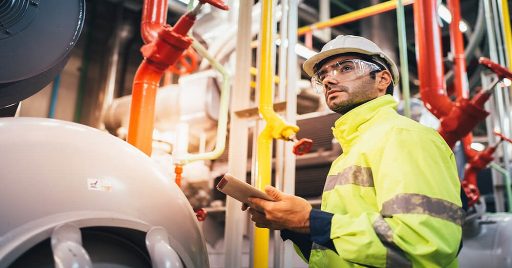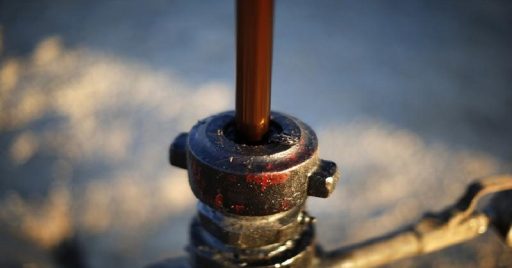AI for tripping pipe safety is the most significant benefit that technology can bring to the oil rigs. With the capability to analyze a massive amount of data in a fraction of time, AI can study past experiences within the upstream industry and learn the patterns that are working or failing the tripping in/out operations. With predictive and preventive analytics, it will suggest eliminating failing components and optimizing the serving parts. The data encompasses workers, equipment, products, procedures, investments, and the environment to provide a comprehensive picture for machine learning to develop optimal solutions.
In this article, we will review seven benefits of AI for tripping pipe safety. Hence, managers have a complete picture of the intelligent HSE opportunity unfolding in the oil and gas industry.
Table of content
1. Detecting access control violations
Red zones are the most dangerous locations on the site that happen to be on the rig floor. Being close to the rotary table when rotating during operations or proximity of the tong swing path and even elevator path or setback area has dangerous consequences for workers. Since humans are often guilty of overconfidence, they might ignore the warning signs and stand in the wrong location. That is where AI for tripping pipe safety comes in. Being consistently present behind every CCTV camera can raise the alarms and notify the HSE manager about the violation so the worker can be protected from their own mistake and the employer be saved from preventable expenses!
2. Identifying PPE violations
PPE is essential for tripping pipe safety because it can protect the eyes, skin, hands, head, feet, and skeletomuscular structure of the body. It can save a life when an incident occurs out of nowhere. But wearing PPE might feel uncomfortable for some workers, so they might be under the impression that they can somehow ignore them from time to time! That is when injuries happen without the extra protection of PPE. To prevent such worse-case scenarios, AI for tripping pipe safety will watch the operations closely, checking every PPE and notifying HSE professionals if any essential PPE is missing from staff clothing.

3. Recognizing ergonomic mistakes
The posture workers hold by their body has a protective effect on their safety, meaning if they hold, push, pull or lift drill pipe with an incorrect posture, they will put pressure on their lower back, neck, shoulder, or wrist more than they can handle. So, they get ergonomic injuries that could have been prevented by the simple act of holding the correct posture. AI for tripping pipe safety receives massive training data about human anatomy to recognize ergonomic mistakes and notify the HSE team to remind the workers to correct them. The reminders also act like passive training that habituates ergonomic hygiene in workers!
4. Reminding housekeeping neglect
Neglect has a long history in human society, and housekeeping has an essential share of it. But in a critical time such as tripping in/out of operation, minor housekeeping mistakes such as leaving small tools on the ground can lead to major accidents such as a trip toward a rotating table or slip off the edges of elevated workspace. AI for tripping pipe safety can identify out-of-place objects or messy floors and send notifications to the team to organize them.

5. Notifying equipment inspection neglect
Equipment must be at optimal state when starting operation, and that requires inspection by staff so every connection is intact and every bolt is in place. Even fingerboard latches must be checked each time for being closed or opened at the right time. If workers forget to do the inspection, AI for tripping pipe safety has learned the procedure, always watching and recognizing missing steps. It can remind the team to take the missing step before moving to the next one.
Even floor mats are under the control of predictive analytics, so they are replaced when their useful lifespan is over to keep the floors perfectly anti-slip at all times. Having access to integrated systems of the supply chain, installation and maintenance make it possible for AI systems to predict and prevent equipment malfunction based on manufacturers’ instruction and historical rate of failures.
6. Preventing work shift abuse
Long work shifts can harm the mental and physical state of workers that negatively impacts their performance. Unfortunately, it happens frequently for many reasons, such as lack of sufficient personnel due to the harsh working conditions on oil rigs. But AI for tripping pipe safety has access to the historical record of work shifts, breaks, and rate of accidents to develop the optimal work/break schedule to keep workers perfectly alert and ready for each operation. It can warn when workers haven’t taken a break for too long during operations.
7. Supporting teamwork efforts
Teamwork plays a major role in providing safety because staff can recognize unsafe performance in their colleagues and catch each other when they make mistakes during operations. But AI for tripping pipe safety can be a part of the team too, who, unlike humans, never gets tired or bored and keeps monitoring the operations through surveillance cameras. If it sees a worker doing something unsafe or revealing dangerous behaviors, it can call others to help.
Conclusion
AI for tripping pipe safety is magic that was missing on oil rigs. It is a savior that can protect workers by identifying safety violations such as access control, PPE, postures, housekeeping, equipment inspection, work shifts, and teamwork that often cause fatal accidents during tripping in/out operations.
But AI can also protect investors from preventable expenses by the simple act of real-time monitoring of tripping pipe operations through CCTV cameras. Preventing accidents will also protect the environment from disasters such as fire and explosions that have endangered other life forms.
AI-based HSE management system is still an opportunity that is not exhausted in the oil and gas industry, so managers can take full advantage while maximizing safety for their personnel and ecosystem.